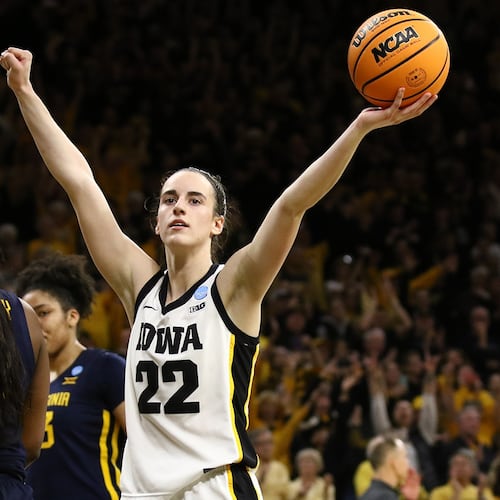As 2019 began, the identity of the NBA’s best rookie wasn’t in doubt. Luka Doncic of Dallas had indeed appeared to be what his ardent supporters insisted he was – a tremendously useful player, perhaps even a generational talent. And what team had famously traded away its chance to draft Doncic No. 3 overall? Why, the Hawks.
As much as the Hawks insisted that deal wasn’t an A/B comparison of Doncic to Trae Young, whom they wound up taking with the fifth pick, that was always how it was going to be perceived. (We say again: That trade wasn’t just Doncic-for-Young but Doncic-for-Young-AND-a-top-five-protected-Round-1-pick-this-June.) Through Jan. 1, Doncic clearly was the better player, though Young was by no means a fizzle. But here it is almost March, and we must note:
Doncic will still be ROY, but Young surely will finish second. And recent doings suggest that the 2018 draft may have included two generational talents.
Raw numbers: Doncic is averaging 20.9 points, 7.2 rebounds and 5.7 assists; Young averages 17.5 points, 3.2 rebounds and 7.7 assists. Doncic has made 43.2 percent of his shots, 35.3 percent of his 3-pointers; Young has made 41.0 and 32.9 percent of his. February has been Doncic’s best month: He’s averaging 24.1 points, 9.3 rebounds and 7.1 assists therein. February has also been Young’s best: He’s averaging 22.2, 3.9 and 9.2.
In November, Young made 19.8 percent of his 3-pointers, which was … well, not good. In February, he has made 43.9 percent. On Monday night in Houston, he made eight treys (a career best) and scored 36 points (likewise). He did this on the same night James Harden missed all 10 of his 3-pointers and saw his overblown streak of consecutive 30-point games end at 32. (We old-timers note that Harden still wasn’t halfway to Wilt Chamberlain’s record of 65 games of 30-plus points.)
Those who track advanced analytics will point to VORP (Value Over Replacement Player) to make the case that Doncic still has it all over Young. Doncic’s VORP is 2.6, 24th among NBA players. Young’s is minus-0.4, which ranks 479th of 504 players. Collin Sexton, another rookie point guard who was a lottery pick, is 504th. Much of Young’s VORP can be traced to his defense, of which there still isn’t much, but that’s not unexpected. He’s not big, and he’s 20 years old.
But he is – I think we can say this without fear of contradiction – exactly what the Hawks wanted, meaning a player around whom they can build. He and Kevin Huerter, who ranks 11th among rookies in scoring and who was snagged with the 19th pick, are surely what Travis Schlenk had in mind – a reasonable facsimile of the two guards who, after a few years of development, helped the Golden State Warriors become the Golden State Warriors.
Will Young be as good as Stephen Curry? Given that the latter is a two-time MVP, probably not. Will Huerter be as dangerous as Klay Thompson? Probably not. But the two rookie Hawks have demonstrated the potential to become something special, which is all a rebuilding club can ask from one draft.
Let’s not get ahead of ourselves. The Warriors landed Curry in 2009, Thompson in 2011. It wasn’t until after a 2012 draft that yielded Harrison Barnes and Draymond Green, that Golden State even nosed above .500, and it wasn’t until 2015, after adding veterans Andre Iguodala and Andrew Bogut, that they started winning 60-plus games and NBA titles. The Hawks aren’t going to get good – they’re 20-41, holders of the league’s fifth-worst record – anytime soon. But they’re collecting the pieces that should someday make them good, and in Trae Young they could well have their cornerstone.
About the Author
The Latest
Featured

